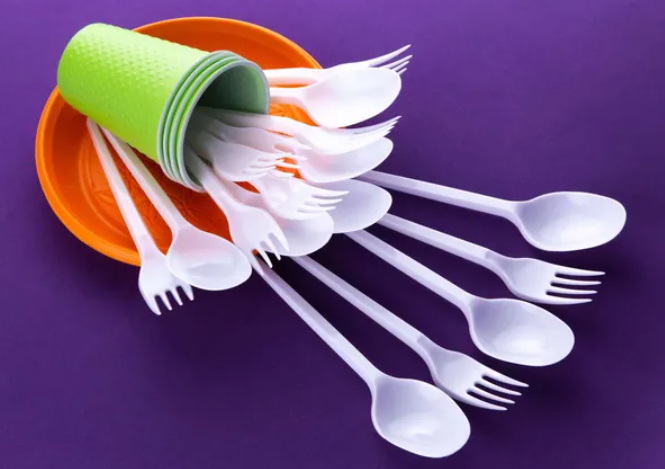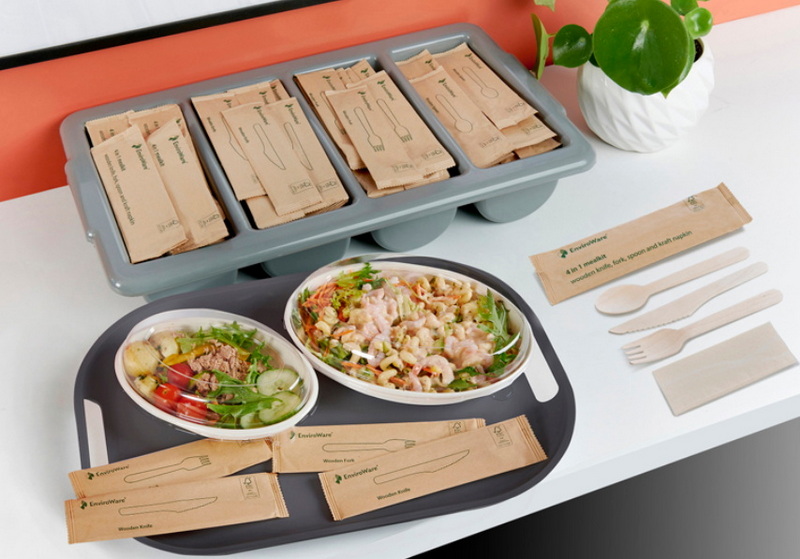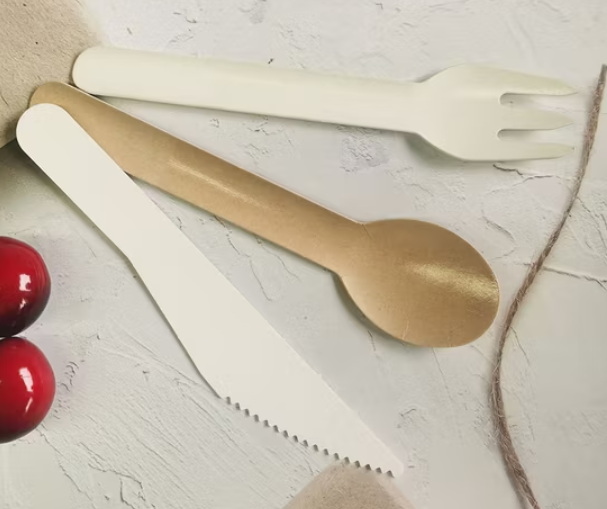
Content Menu
● Introduction to Wrapped Disposable Cutlery
>> Advantages of Wrapped Disposable Cutlery
● Comparison with Reusable Cutlery
>> Maintenance and Hygiene
>> Cross-Contamination Risk
>> Environmental Impact
>> Cost and Convenience
● Innovative Alternatives to Traditional Plastic
>> Edible Cutlery
>> Wooden Cutlery Wrapped in Paper
● Impact on Food Safety and Hygiene
>> Role in Reducing Cross-Contamination
>> Impact on Environmental Sustainability
● Practical Applications of Wrapped Disposable Cutlery
>> In Food Service Industry
>> In Large Events
>> In Healthcare Settings
● Conclusion
● FAQs
>> 1. What are the primary benefits of using wrapped disposable cutlery?
>> 2. How does wrapped disposable cutlery reduce cross-contamination?
>> 3. Are there eco-friendly alternatives to traditional plastic wrapped disposable cutlery?
>> 4. What are some innovative alternatives to traditional wrapped disposable cutlery?
>> 5. How does wrapped disposable cutlery impact food safety?
In the quest for maintaining a clean and sanitary environment, especially in kitchens and dining settings, wrapped disposable cutlery has emerged as a superior choice. This type of cutlery offers numerous benefits, including enhanced hygiene, convenience, and reduced risk of cross-contamination. In this article, we will delve into the reasons why wrapped disposable cutlery is the best choice for hygiene, exploring its advantages over traditional reusable cutlery and highlighting its role in ensuring food safety.

Introduction to Wrapped Disposable Cutlery
Wrapped disposable cutlery refers to utensils such as forks, knives, and spoons that are individually wrapped in plastic or paper, ensuring they remain clean and untouched until use. This wrapping not only protects the cutlery from environmental contaminants but also provides an additional layer of hygiene, making it ideal for settings where cleanliness is paramount.
Advantages of Wrapped Disposable Cutlery
1. Hygiene and Sanitation: The primary advantage of wrapped disposable cutlery is its ability to maintain high hygiene standards. Since each piece is individually wrapped, it remains free from contaminants until it is used, reducing the risk of cross-contamination significantly. This is particularly important in environments like hospitals, large events, or food establishments where maintaining cleanliness is crucial.
2. Convenience: Wrapped disposable cutlery is ready to use straight from the packaging, eliminating the need for washing or sanitizing. This convenience saves time and resources, making it a preferred choice for busy settings.
3. Food Safety: The use of wrapped disposable cutlery ensures that each utensil is in pristine condition, reducing the risk of scratches or wear that can harbor bacteria. This is essential for maintaining food safety standards.
4. Environmental Considerations: While traditional plastic cutlery has environmental drawbacks, modern wrapped disposable cutlery options include eco-friendly materials like compostable PLA or biodegradable paper wraps, which reduce plastic waste.
Comparison with Reusable Cutlery
Maintenance and Hygiene
- Reusable Cutlery: Requires regular cleaning and sanitizing, which can be time-consuming and may not always eliminate all contaminants.
- Wrapped Disposable Cutlery: Eliminates the need for cleaning and sanitizing, as each piece is used once and then discarded.
Cross-Contamination Risk
- Reusable Cutlery: Can harbor germs and bacteria if not cleaned properly, increasing the risk of cross-contamination.
- Wrapped Disposable Cutlery: Minimizes this risk by ensuring each utensil is clean and germ-free at the time of use.
Environmental Impact
- Reusable Cutlery: While reusable, it often requires more resources to produce initially and must be used multiple times to offset its carbon footprint.
- Wrapped Disposable Cutlery: Offers eco-friendly options that reduce plastic waste and can be composted or biodegradable.
Cost and Convenience
- Reusable Cutlery: Initially more expensive but can be cost-effective in the long run if properly maintained.
- Wrapped Disposable Cutlery: Inexpensive upfront and convenient, as it eliminates the need for washing and storage.
Innovative Alternatives to Traditional Plastic
In recent years, there has been a shift towards more sustainable alternatives to traditional plastic cutlery. Options like edible cutlery made from natural ingredients and wooden cutlery wrapped in paper have gained popularity for their eco-friendly nature and ability to maintain hygiene standards.
Edible Cutlery
Edible cutlery, made from flours of jowar (sorghum) blended with rice and wheat, offers a biodegradable and nutritious alternative to plastic. It is 100% natural, free from chemicals, and comes in various flavors, making it a unique solution for reducing plastic waste while maintaining hygiene. This type of cutlery is particularly useful in settings where waste reduction is a priority, such as outdoor events or festivals.
Wooden Cutlery Wrapped in Paper
Wooden cutlery wrapped in biodegradable paper is another sustainable option. Made from FSC-certified sustainable wood, it ensures minimal environmental impact while maintaining high hygiene standards by being individually wrapped. This option is favored in settings where both aesthetics and sustainability are important, such as in upscale events or eco-friendly restaurants.

Impact on Food Safety and Hygiene
The use of wrapped disposable cutlery significantly impacts food safety and hygiene by ensuring that each utensil is in pristine condition at the time of use. This reduces the risk of bacterial contamination, which is a major concern in food handling environments. Additionally, the individual wrapping of each piece of cutlery minimizes the risk of cross-contamination, which can occur when utensils are stored together or washed in batches.
Role in Reducing Cross-Contamination
Cross-contamination is a significant risk in environments where food is prepared and served. Wrapped disposable cutlery plays a crucial role in reducing this risk by ensuring that each utensil is used once and then discarded, eliminating the possibility of transferring bacteria from one utensil to another. This is particularly important in settings like hospitals or schools, where maintaining high hygiene standards is critical.
Impact on Environmental Sustainability
While traditional disposable cutlery has been criticized for its environmental impact, modern wrapped disposable cutlery offers more sustainable options. The use of biodegradable materials and compostable wraps reduces plastic waste and minimizes the carbon footprint associated with traditional plastic cutlery. This shift towards eco-friendly materials aligns with global efforts to reduce plastic waste and promote sustainability.
Practical Applications of Wrapped Disposable Cutlery
In Food Service Industry
In the food service industry, wrapped disposable cutlery is widely used due to its convenience and hygiene benefits. Restaurants, cafes, and food trucks often opt for this type of cutlery to ensure quick service while maintaining high hygiene standards. Additionally, the use of eco-friendly options aligns with consumer preferences for sustainable practices.
In Large Events
Large events such as festivals, concerts, and sporting events benefit from wrapped disposable cutlery due to its ease of use and disposal. It eliminates the need for extensive cleaning facilities and reduces waste management challenges, making it an ideal choice for temporary or outdoor settings.
In Healthcare Settings
In healthcare settings, maintaining high hygiene standards is paramount. Wrapped disposable cutlery is often used in hospitals and clinics to minimize the risk of cross-contamination and ensure patient safety. Its use aligns with strict infection control protocols, providing an additional layer of protection against bacterial transmission.
Conclusion
In conclusion, wrapped disposable cutlery offers a superior solution for maintaining hygiene and ensuring food safety in various settings. Its convenience, cost-effectiveness, and ability to reduce cross-contamination make it a preferred choice over reusable cutlery. Additionally, with the advent of eco-friendly options, it is now possible to balance hygiene needs with environmental considerations.

FAQs
1. What are the primary benefits of using wrapped disposable cutlery?
Wrapped disposable cutlery offers enhanced hygiene by ensuring each utensil is clean and germ-free at the time of use. It also provides convenience by eliminating the need for washing and sanitizing.
2. How does wrapped disposable cutlery reduce cross-contamination?
Wrapped disposable cutlery reduces cross-contamination by ensuring each utensil is individually wrapped and used once, minimizing the risk of transferring bacteria from one utensil to another.
3. Are there eco-friendly alternatives to traditional plastic wrapped disposable cutlery?
Yes, eco-friendly alternatives include cutlery made from compostable PLA, biodegradable paper wraps, and wooden cutlery wrapped in paper. These options reduce plastic waste and offer a more sustainable choice.
4. What are some innovative alternatives to traditional wrapped disposable cutlery?
Innovative alternatives include edible cutlery made from natural ingredients and wooden cutlery wrapped in paper. These options are biodegradable and offer a unique way to reduce plastic waste while maintaining hygiene.
5. How does wrapped disposable cutlery impact food safety?
Wrapped disposable cutlery impacts food safety positively by ensuring each utensil is in pristine condition, reducing the risk of scratches or wear that can harbor bacteria. This helps maintain high food safety standards.

















